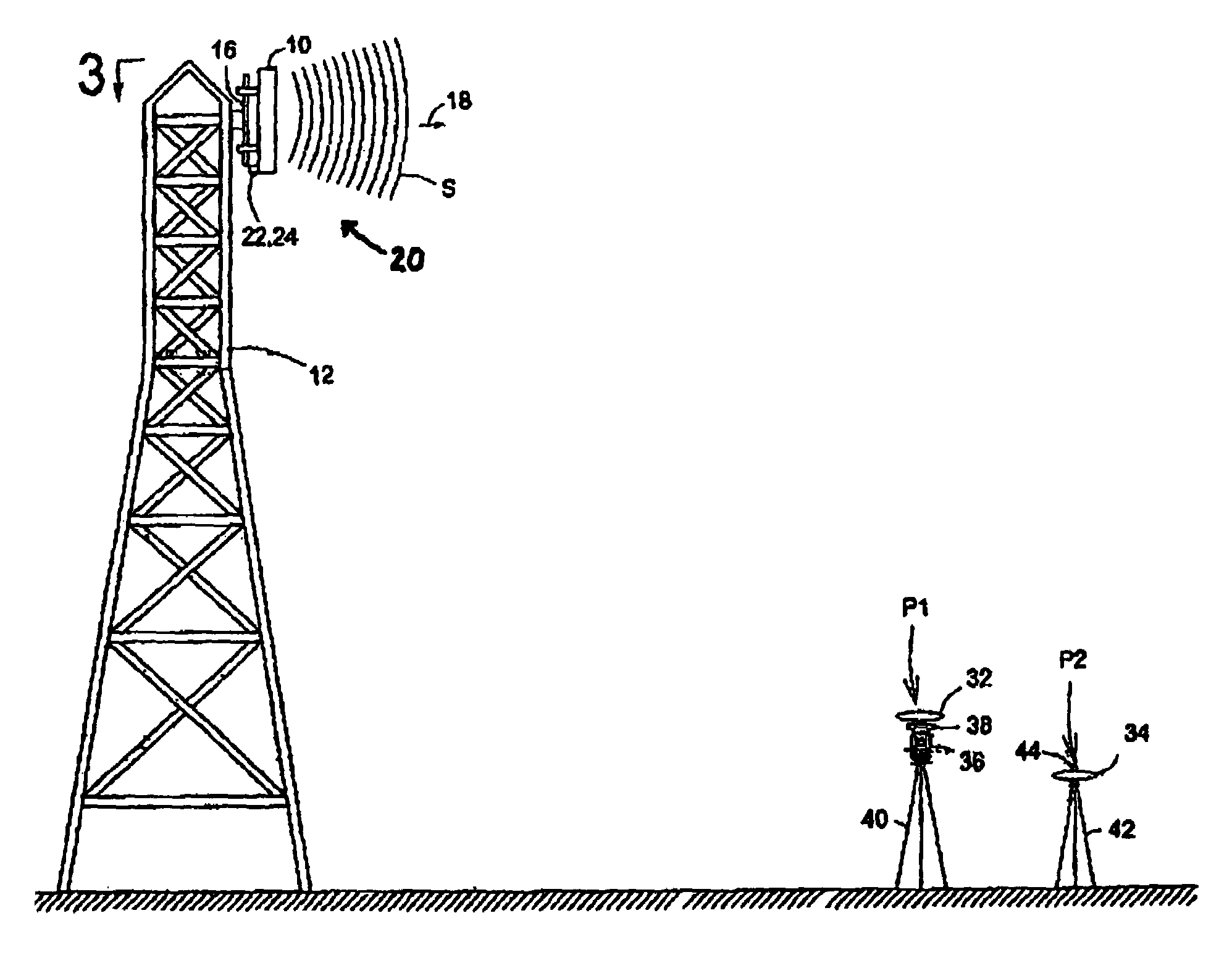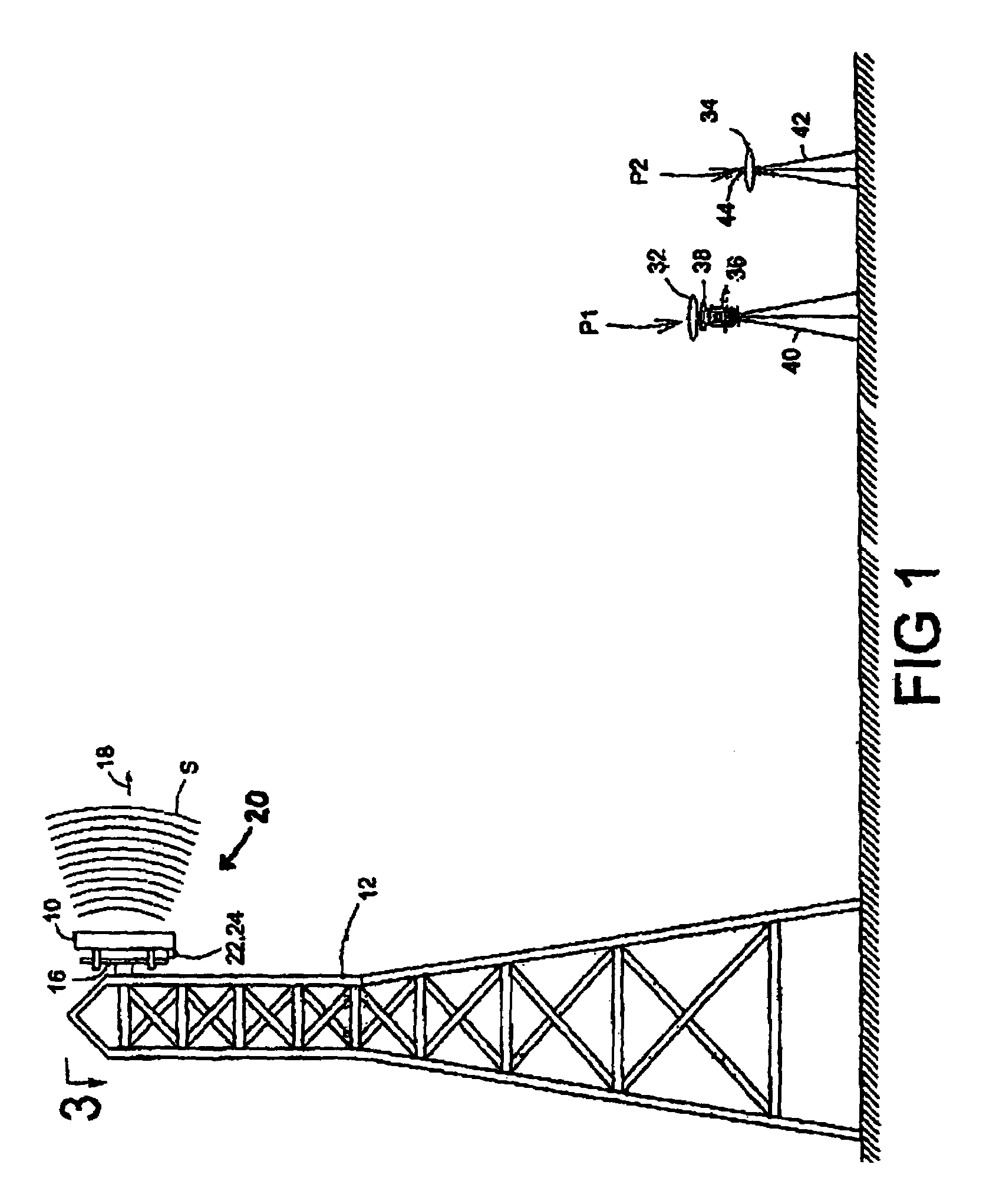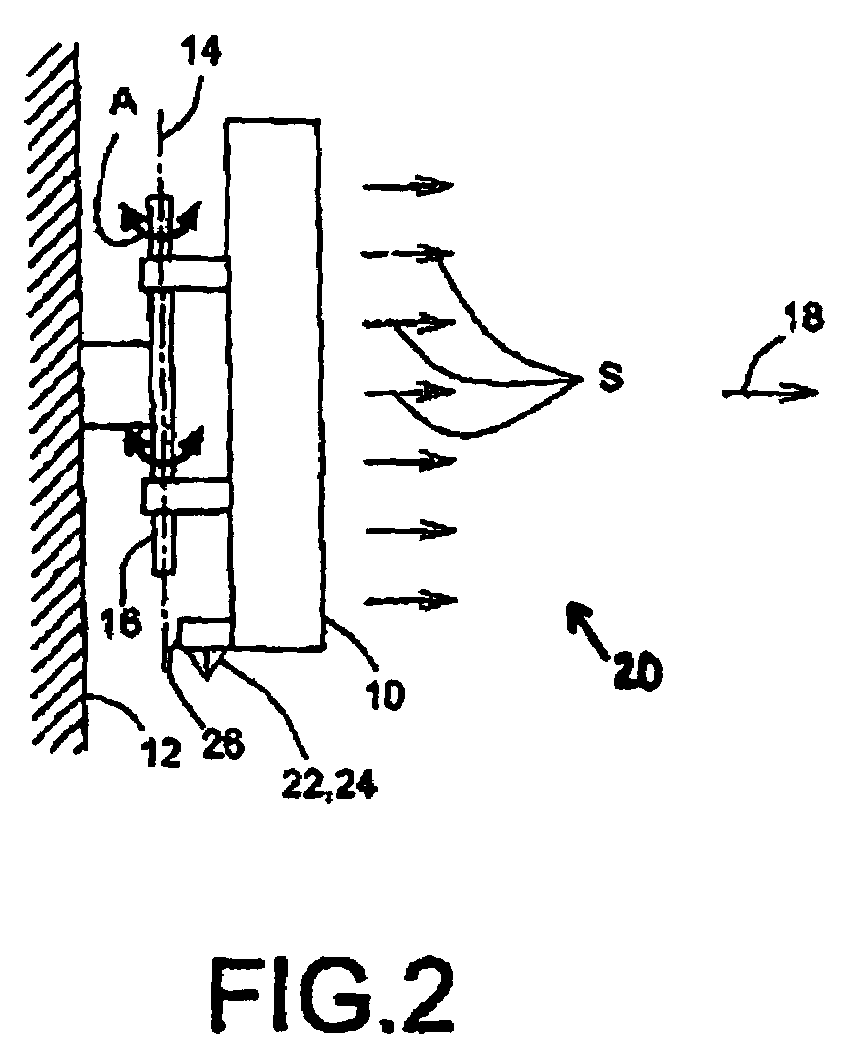Antenna alignment system and method
an antenna alignment and antenna technology, applied in the field of antennas, can solve the problems of increasing the cost of aligning the antenna, and achieve the effect of improving the antenna alignment system
- Summary
- Abstract
- Description
- Claims
- Application Information
AI Technical Summary
Benefits of technology
Problems solved by technology
Method used
Image
Examples
Embodiment Construction
[0030]Referring to FIG. 1, there is shown a typical ground telecommunication antenna 10 installed on a high structure such as a building or a transmission tower 12. An antenna alignment system 20 in accordance with a preferred embodiment of the present invention is shown located adjacent the tower 12 on the ground for easy manipulation by an operator (not shown). The antenna 10 is pivotally mounted on the structure 12 about a generally vertical axis 14 of its rotation shaft 16 (see arrow A in FIG. 2) in order to be positionable thereabout to enable the adjustment of its azimuth orientation. Once in proper orientation, the antenna is lockable in place to remain in its adjusted orientation. It should be understood that the present invention could be utilized with any antenna structure so long as the antenna is movable, hinged, or otherwise adjustably mounted.
[0031]At least one prism target is temporarily and releasably mounted on the antenna 10 using a mounting support 26 (see FIG. 2)...
PUM
 Login to View More
Login to View More Abstract
Description
Claims
Application Information
 Login to View More
Login to View More - R&D
- Intellectual Property
- Life Sciences
- Materials
- Tech Scout
- Unparalleled Data Quality
- Higher Quality Content
- 60% Fewer Hallucinations
Browse by: Latest US Patents, China's latest patents, Technical Efficacy Thesaurus, Application Domain, Technology Topic, Popular Technical Reports.
© 2025 PatSnap. All rights reserved.Legal|Privacy policy|Modern Slavery Act Transparency Statement|Sitemap|About US| Contact US: help@patsnap.com



